Soviet tanks in Budapest
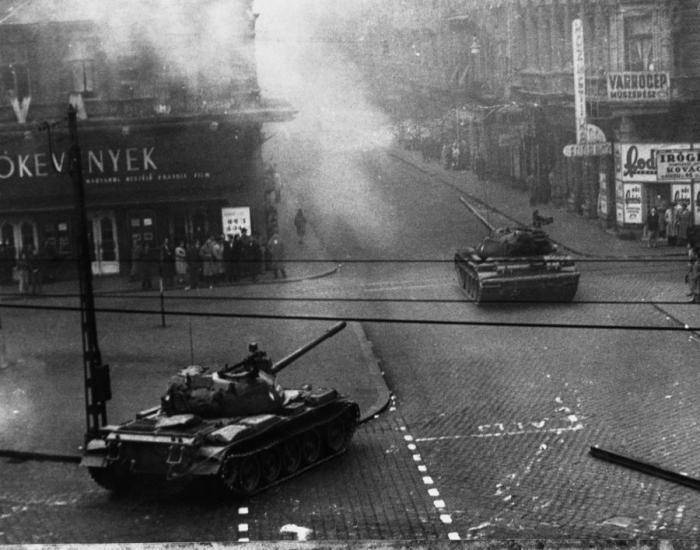
Anti-Soviet speeches and demonstrations in post-war countries building socialism began to manifest themselves under Stalin, but after his death in 1953, they adopted a wider scale. In Poland, Hungary, the GDR held mass protests.
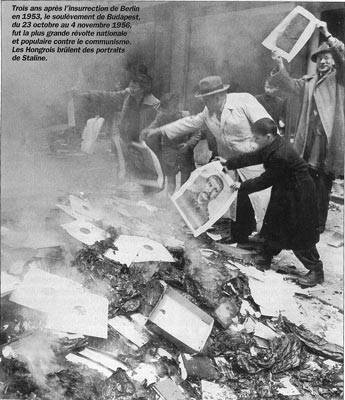
The decisive role in the initiation of the Hungarian events was played, of course, by the death of I.Stalin, and the subsequent actions of Nikita Khrushchev in “exposing the personality cult”.
As you know, in the Second World War, Hungary took part on the side of the fascist bloc, its troops participated in the occupation of the territory of the USSR, from the Hungarians three SS divisions were formed. In 1944 — 1945, the Hungarian troops were defeated, its territory occupied by Soviet troops. Hungary (as a former ally of Nazi Germany) had to pay significant contributions (reparations) in favor of the USSR, Czechoslovakia and Yugoslavia, which accounted for up to a quarter of Hungary’s GDP.
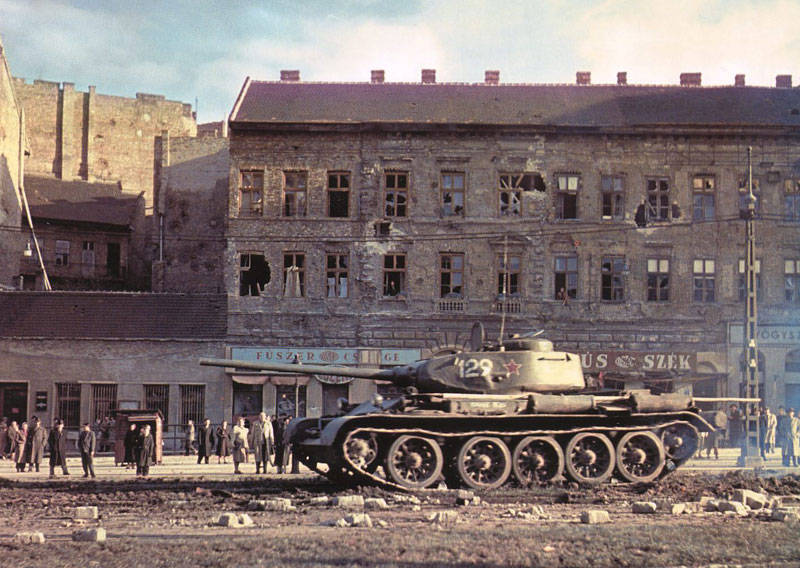
After the war, free elections were held in the country, provided for by the Yalta agreements, in which the Small Rural Party won the majority. However, the control commission, which was headed by the Soviet marshal Voroshilov, gave the winning majority only half of the seats in the Cabinet of Ministers, while the key posts remained with the Hungarian Communist Party.
The Communists, with the support of the Soviet troops, arrested most of the leaders of the opposition parties, and in 1947 they held new elections. By 1949, power in the country was mainly represented by the communists. In Hungary, the regime was established Matthias Rakosi. Collectivization was carried out, mass repressions began against the opposition, the church, officers and politicians of the former regime and many other opponents of the new government.
WHO IS SUCH?
Matyash Rakoshi, nee Matthias Rosenfeld (14 March 1892 of the year, Serbia - 5 February 1971 of the year, Bitter, USSR) - Hungarian political figure, revolutionary.
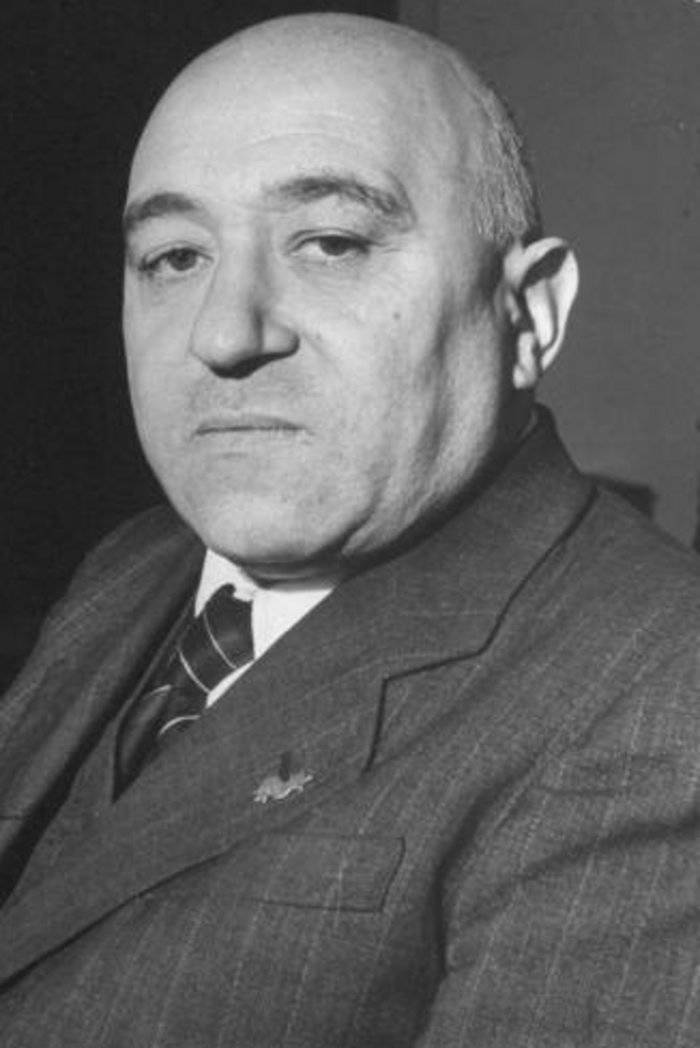
Rakoshi was the sixth child in a poor Jewish family. During the First World War, he fought on the Eastern Front, where he was captured, and joined the Communist Party of Hungary.
He returned to Hungary, participated in the government of Bela Kun. After his fall he fled to the USSR. Participated in the governing bodies of the Comintern. In 1945 he returned to Hungary and led the Communist Party of Hungary. In 1948, the Social Democratic Party was forced to merge with the CPV into a single Hungarian Labor Party (VPT), of which he was elected General Secretary.
DIKTATURA Rakosh
His regime was characterized by the political security service AVH conducted by the political terror against the forces of internal counterrevolution and the persecution of the opposition (for example, he was accused of “titoism” and targeting Yugoslavia, and then executed by the former Minister of the Interior Laszlo Raik). Under him, the nationalization of the economy and the accelerated cooperation of agriculture took place.
Rakosi called himself "the best Hungarian student of Stalin," copying the Stalinist regime in the smallest detail, to the extent that in the last years of his reign, the Hungarian military uniform was copied from the Soviet, and the shops of Hungary began selling rye bread, which earlier in Hungary did not eat .
Since the end of 1940 – x. unleashed a campaign against the Zionists, while eliminating his political rival - Interior Minister Laszlo Raik.
After the report of Khrushchev at the XX Congress of the CPSU, Rakosi was removed from his post as general secretary of the Central Committee of the HWP (instead of him, this position was taken by Erno Gero). Soon after the uprising in Hungary, 1956 was taken to the USSR, where he lived in the city of Gorky. In 1970, he was asked to give up his active participation in Hungarian politics in exchange for his return to Hungary, but Rakosi refused.
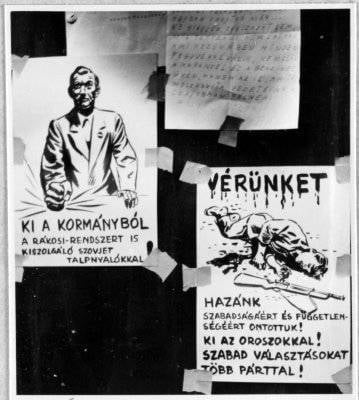
He was married to Theodore Kornilov.
WHAT DIRECTLY BECAME THE REASON OF THE REBELLNESS?
When it comes to the causes of the many thousands demonstrations that began in Budapest in October 1956, which later developed into riots, they usually speak of the Stalinist policies of the Hungarian leadership, led by Matthias Rakosi, repression and other excesses of socialist construction. But it's not only that.
To begin with, the overwhelming majority of the Magyars did not consider their country to be to blame for the outbreak of World War II and believed that Moscow had acted extremely unfairly with Hungary. And although the former Western allies of the USSR in the anti-Hitler coalition supported all points of the 1947 peace treaty of the year, but they were far away, and the Russians were near. Naturally, landowners and the bourgeoisie, who lost property, were unhappy. Western radio stations Voice of America, the BBC, and others actively influenced the population, urging them to fight for freedom and promising immediate help in the event of an uprising, including the invasion of Hungarian forces by NATO forces.
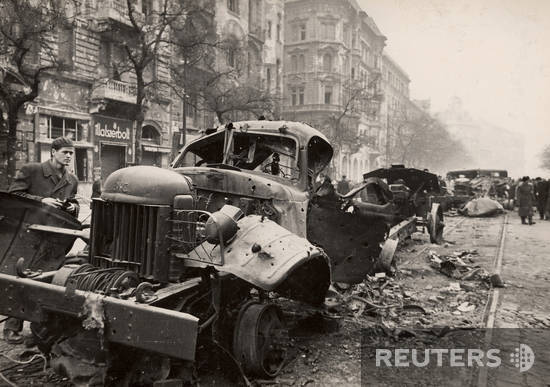
The death of Stalin and Khrushchev’s speech at the 20th CPSU Congress gave rise to attempts at liberation from the communists in all Eastern European countries, one of the most striking manifestations of which was the rehabilitation and return to power in October 1956 of the Polish reformer Vladislav Gomulka.
After the monument to Stalin was dumped from the pedestal, the rebels tried to cause him maximum damage. The hatred of Stalin by the rebels was explained by the fact that Matyash Rakosi, who carried out the repression at the end of the 40-s, called himself a loyal student of Stalin.
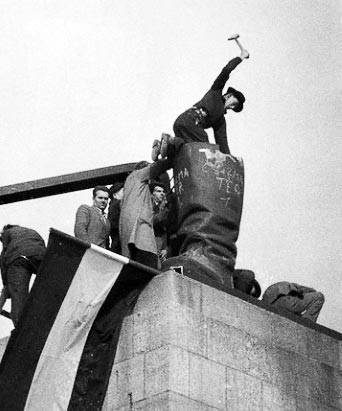
An important role was played by the fact that in May 1955, the neighboring Austria became a single neutral independent state, from which the allied occupying forces were withdrawn after signing a peace treaty (in Hungary, the Soviet troops were from 1944).
After 18 resigned in July 1956, Matthias Rakosi, Secretary General of the Hungarian Labor Party, his closest associate, Ernö Gerö, became the new leader of the Labor Party, but such minor concessions could not satisfy the people.
The Poznan uprising in July of 1956 in Poland, which caused a great resonance, also led to an increase in critical attitudes among the people, especially among students and the writing intelligentsia. From the middle of the year, the “Petyofi Circle” began to actively operate, in which the most acute problems facing Hungary were discussed.
REBELLION RISE STUDENTS
October 16 1956 students of the University of Szeged organized out of the pro-communist “Democratic Union of Youth” (Hungarian analogue of the Komsomol) and revived the “Union of Students of Hungarian Universities and Academies” that existed after the war and was dispersed by the government. Within a few days, branches of the Union appeared in Pec, Miskolc, and other cities.
October 22 was joined by students of the Budapest University of Technology who formulated a list of requirements to the authorities from 16 and planned a protest march from the Bemu monument (Polish general, hero of the Hungarian revolution 23) on October 12 to the monument to Petefi.
23 OCTOBER
A demonstration started at 3 in the afternoon, in which, besides students, tens of thousands of people took part. The demonstrators carried red flags, banners on which slogans were written about Soviet – Hungarian friendship, the inclusion of Imre Nagy in the government, etc. On Yasai Mari squares, on March 15, on the streets of Kozuth and Rakoczi, radical demonstrators joined the demonstrators, shouting out slogans of another kind. They demanded the restoration of the old Hungarian national emblem, the old Hungarian national holiday instead of the Day of Liberation from Fascism, the abolition of military training and the lessons of the Russian language. In addition, there were demands for free elections, the creation of a government led by Nagy, and the withdrawal of Soviet troops from Hungary.
At 20 hours on the radio, the first secretary of the Central Committee of the URT, Erne Gere, delivered a speech strongly condemning demonstrators. In response, a large group of demonstrators attempted to infiltrate the Radio House’s broadcasting studio with a demand to broadcast the programmatic demands of the demonstrators. This attempt led to a collision with the units of the Hungarian state security AVH, which defended the House of Radio, during which after the 21 hours the first killed and wounded appeared. Weapon The rebels received or were taken away from reinforcements sent to help protect the radio, as well as in civil defense warehouses and in captured police stations.
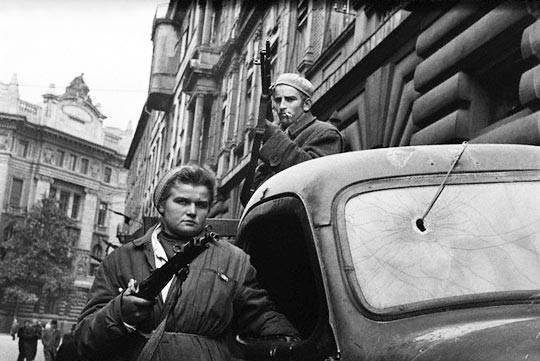
A group of insurgents infiltrated the territory of Kilian’s barracks, where three building battalions were located, and seized their weapons. Many stroybatovtsy joined the rebels. The fierce battle in the House of Radio and around it lasted all night.
At 23 hours, on the basis of the decision of the Presidium of the CPSU Central Committee, the Chief of the General Staff of the USSR Armed Forces, Marshal V. D. Sokolovsky, ordered the Special Corps commander to start a nomination to Budapest to assist the Hungarian troops "in restoring order and creating conditions for peaceful constructive labor." Parts of the Special Corps arrived in Budapest by 6 in the morning and engaged in battles with the rebels.
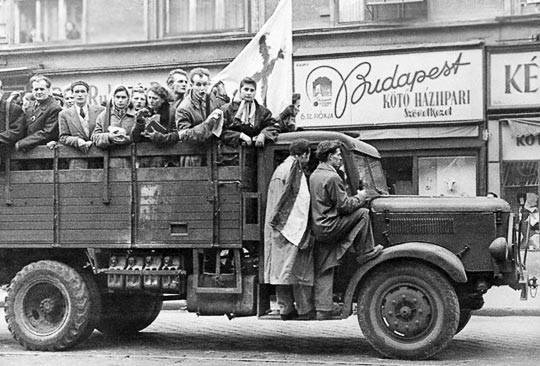
On the night of October 24, about 6000 troops of the Soviet Army, 290 were brought into Budapest tanks, 120 armored personnel carriers, 156 guns. In the evening, they were joined by units of the 3rd Rifle Corps of the Hungarian People's Army (VNA).
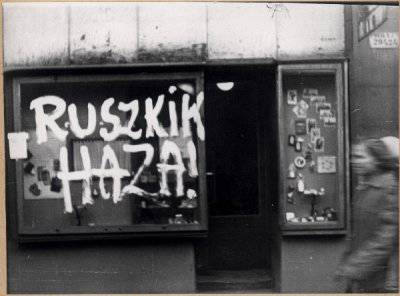
Members of the Presidium of the CPSU Central Committee A. I. Mikoyan and M. A. Suslov, Chairman of the KGB I. A. Serov, Deputy Chief of the General Staff, Army General M. S. Malinin, arrived in Budapest.
On the morning of October 25, the 33 – I Guards Mechanism Division approached Budapest, in the evening - the 128 – I Guards Rifle Division, which joined the Special Corps.
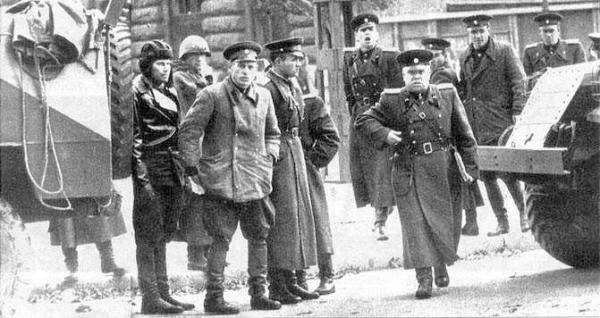
At that time, an incident occurred during a rally outside the parliament building: fire was opened from the upper floors, as a result of which a Soviet officer was killed and a tank was burned. In response, Soviet troops opened fire on the demonstrators, as a result 61 people were killed on both sides and 284 was injured.
UNCOVERED ATTEMPT TO FIND A COMPROMISE
The night before, on the night of 23 on October 1956, the leadership of the Hungarian Communist Party decided to appoint Imre Nagy as Prime Minister, who already held this post in 1953 — 1955, who was distinguished for his reformist views, but was rehabilitated shortly before the uprising. Imre Nagy was often accused of the fact that the formal request to the Soviet troops to assist in suppressing the uprising was not directed without his participation. His supporters claim that this decision was made behind his back by the First Secretary of the Central Committee of the All-Union Communist Party of Europe Ernö Gerø and the former Prime Minister Andrash Hegedusz, and Nagy himself was against the involvement of the Soviet troops.
In such an environment 24 October Nagy was appointed to the post of chairman of the Council of Ministers. He immediately sought not to fight the rebellion, but to lead it.
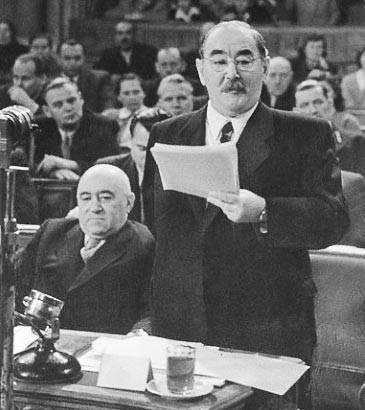
October 28 Imre Nagy recognized the people's indignation as fair, speaking on the radio and stating that "the government condemns the views according to which the current grandiose popular movement is viewed as counter-revolution."
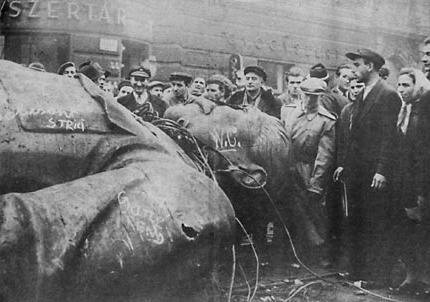
The government announced a cease-fire and the start of negotiations with the USSR on the withdrawal of Soviet troops from Hungary.
Until October 30, all Soviet troops were withdrawn from the capital to the places of deployment. The state security organs were dissolved. The streets of the Hungarian cities were left almost without power.
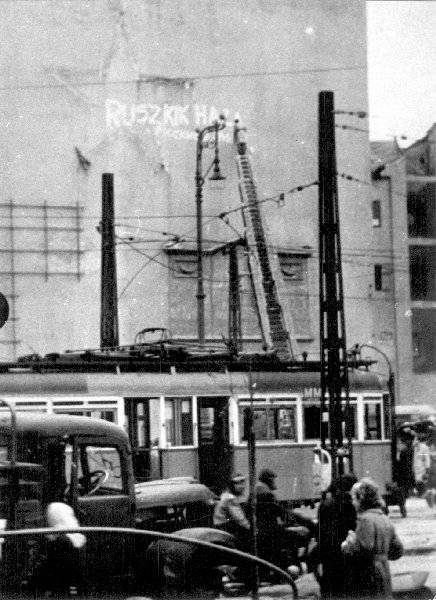
On October 30, the government of Imre Nagy decided to restore the multiparty system in Hungary and to create a coalition government consisting of representatives of the GTP, the Independent Minority Party, the National Peasant Party and the re-established Social Democratic Party. It was announced the upcoming free elections.
And the uprising, already uncontrollable, continued.
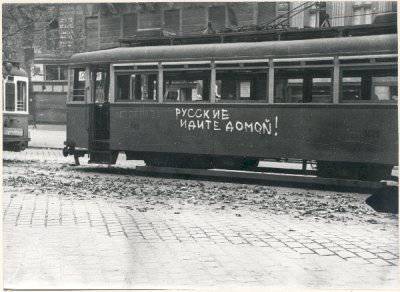
The rebels captured the Budapest Township Committee of the VPT, and over 20 communists were hanged by the crowd. Photos of hanged communists with traces of torture, with persons disfigured by acid, went around the world. This massacre was, however, condemned by representatives of the political forces of Hungary.
Nagy could do little. The uprising spread to other cities and spread ... Chaos quickly set in the country. The railway communication was interrupted, the airports were closed, shops, shops and banks were closed. The rebels were scouring the streets, catching state security officers. They were recognized by the famous yellow shoes, torn to pieces or hung by the feet, sometimes castrated. Caught party leaders with huge nails nailed to the floor, putting in their hands portraits of Lenin.
31 OCTOBER - 4 NOVEMBER
The development of events in Hungary coincided with the Suez crisis. October 29 Israel and then the members of NATO Great Britain and France attacked Egypt, supported by the USSR, in order to capture the Suez Canal, next to which they landed their landings.
October 31 Khrushchev at a meeting of the Presidium of the CPSU Central Committee said: “If we leave Hungary, it will cheer up the Americans, the British and the French imperialists. They will understand our weakness and will attack. ” It was decided to create a "revolutionary workers 'and peasants' government" headed by Janos Kadar and conduct a military operation with the aim of overthrowing the government of Imre Nagy. The plan of the operation, known as "Whirlwind", was developed under the leadership of USSR Minister of Defense Georgy Zhukov.
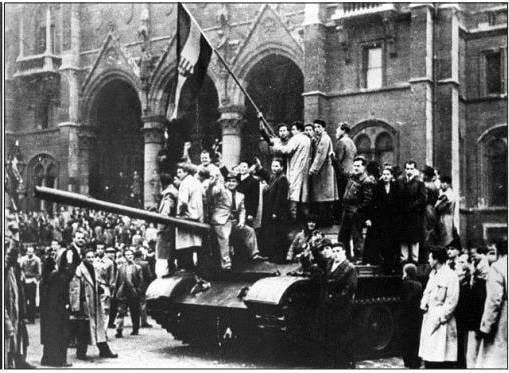
The Hungarian government 1 November, when the Soviet troops were ordered not to leave the location of the units, decided to terminate the Warsaw Pact by Hungary and handed the corresponding note to the USSR Embassy. At the same time, Hungary appealed to the UN for help in defending its neutrality. Measures were also taken to protect Budapest in the event of a “possible external attack”.
Early in the morning of November 4, the entry into Hungary of new Soviet military units began under the general command of Marshal Georgy Konstantinovich Zhukov of the Soviet Union.
4 NOV. OPERATION "VORTEX".
November 4 began the Soviet operation "Whirlwind" and on the same day the main objects in Budapest were captured. Government members Imre Nagy took refuge in the Yugoslav embassy. However, units of the Hungarian National Guard and individual army units continued to resist the Soviet troops.
Soviet troops launched artillery strikes at the centers of resistance and carried out subsequent sweeps by infantry forces with the support of tanks. The main centers of resistance were the working suburbs of Budapest, where local councils managed to lead a more or less organized resistance. These areas of the city were subjected to the most massive shelling.
Against the rebels (more than 50 thousands of Hungarians took part in the uprising) Soviet troops (with a total number of 31550 soldiers and officers) were thrown with the support of the Hungarian workers squads (25 thousands) and the Hungarian state security organs (1,5 thousands).
Soviet units and formations that participated in the Hungarian events:
Special case:
- 2 – I Guards Mechanized Division (Nikolaevsk – Budapest)
- 11 – I Guards Mechanized Division (after 1957 of the year - 30 – I Guards Tank Division)
- 17 – I Guards Mechanized Division (Enakievo – Danube)
- 33 – I Guards Mechanized Division (Kherson)
- 128 – I Guards Rifle Division (after 1957 g. - 128 – i Guards Motorized Rifle Division)
7 –I Guards Airborne Division
- 80 –y parachute regiment
- 108 –y parachute regiment
31 –I Guards Airborne Division
- 114 –y parachute regiment
- 381 –y parachute regiment
8 –I mechanized army of the Carpathian IN (after 1957 g. - 8 – I tank army)
38 – I Army of the Carpathian IN
- 13 – I Guards Mechanized Division (Poltava) (after 1957 g. - 21 – I Guards Tank Division)
- 27 –th mechanized division (Cherkasy) (after 1957, - 27 –th motorized rifle division).
In total, the operation involved:
• personnel - 31550 people
• tanks and self-propelled guns - 1130
• guns and mortars - 615
• anti-aircraft guns - 185
• BTR - 380
• cars - 3830
END OF REVOLT
After 10 in November, before the middle of December, the workers' councils continued their work, often entering into direct negotiations with the command of the Soviet units. However, by 19 December 1956, state security agencies ’workers’ councils were dispersed, and their leaders were arrested.
Hungarians emigrated en masse - almost 200 000 people left the country (5% of the total population), for whom in Austria they had to create refugee camps in Traiskirchen and Graz.
Immediately after the suppression of the uprising, mass arrests began: in total, the intelligence services of Hungary and their Soviet colleagues managed to arrest around 5000 Hungarians (846 of them were sent to Soviet prisons), of which "a significant number of MFTs, military personnel and students".
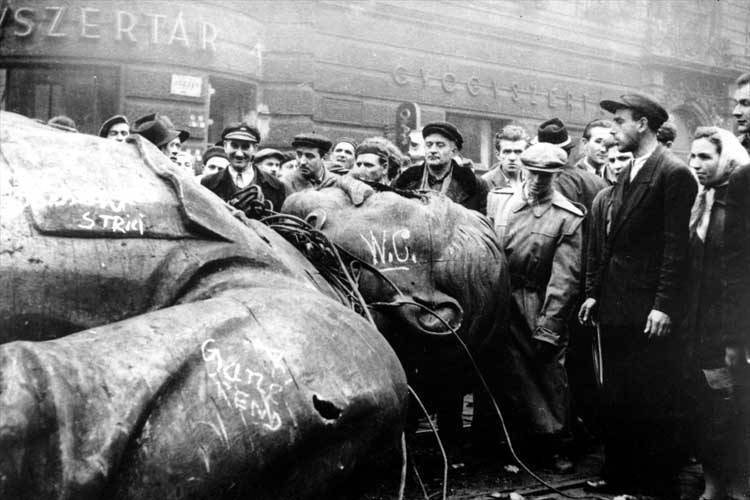
Prime Minister Imre Nagy and members of his government on November 22 1956 were fraudulently lured out of the Yugoslav embassy, where they had taken refuge, and detained in the territory of Romania. Then they were returned to Hungary, and a trial was held over them. Imre Nagy and former Defense Minister Pal Maleter were sentenced to death on charges of treason. Imre Nagy was hanged 16 June 1958 of the year. In total, according to separate estimates, about 350 people were executed. About 26 000 people were prosecuted, of which 13 000 was sentenced to various terms of imprisonment. By 1963, all participants in the uprising were pardoned and released by the government of János Kadar.
After the fall of the socialist regime, Imre Nagy and Pal Maleter were solemnly reburied in July 1989.
Since 1989, Imre Nagy is considered the national hero of Hungary.
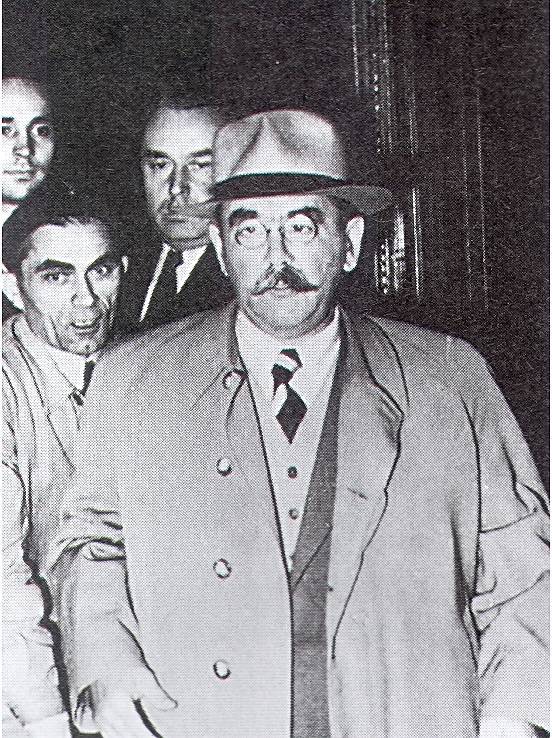
The initiators of the speeches were students and workers of large factories. The Hungarians demanded free elections and the withdrawal of Soviet military bases. Virtually throughout the country, workers' committees took over power. The USSR brought troops into Hungary and restored the pro-Soviet regime, brutally crushing resistance. Nagy and several of his comrades in the government were executed. In the battles killed several thousand people (according to some sources - to 10 000).
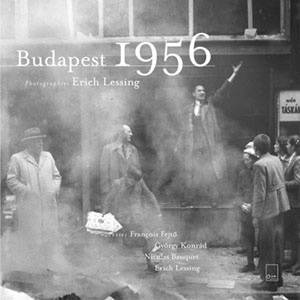
Initially, the 50's on the streets of Budapest and other cities were other demonstrations.
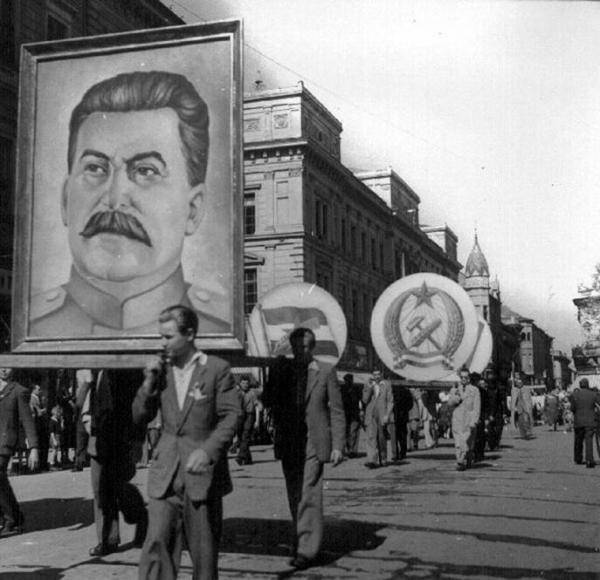
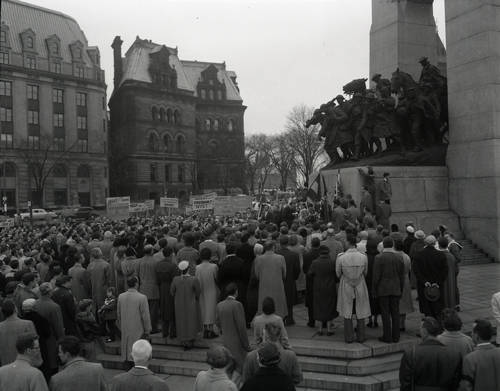
In November 1956, Director of the Hungarian Agency News, shortly before the artillery fire razed his office to the ground, sent a desperate message to the whole world - telex, heralding the beginning of the Russian invasion of Budapest. The text ended with the words: "We will die for Hungary and for Europe!"
Hungary, 1956. Self-defense detachments on the border of Hungary are awaiting the appearance of Soviet military units.
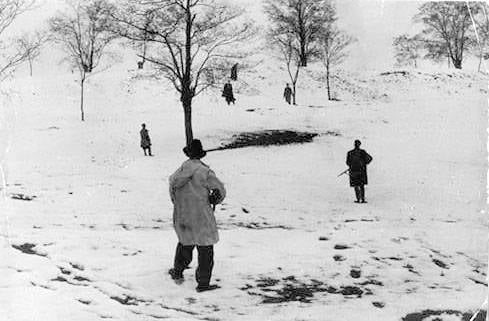
Soviet tanks were introduced to Budapest by order of the communist leadership of the USSR, which took advantage of the formal request of the Hungarian government.
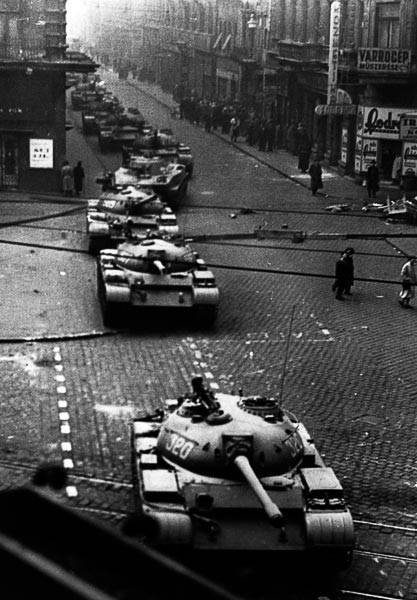
The first Soviet armored vehicles on the streets of Budapest.
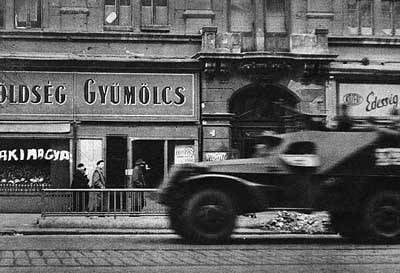
The massacre of the rebels over the communist, Hungary, 1956 year. Yes. It was like that.
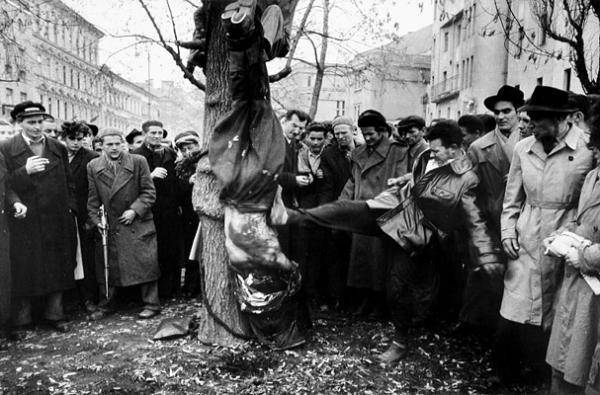
Factory committee in a small Hungarian town.
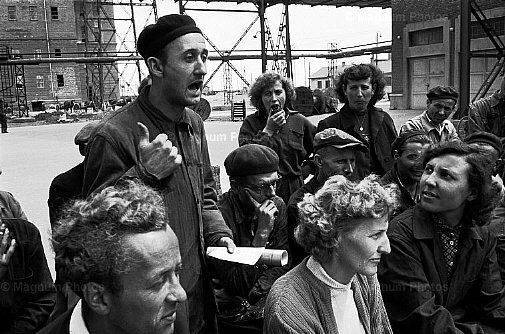
The contents of a bookstore selling communist propaganda products. The rebels destroyed the store, throwing the contents out onto the street and setting it on fire. November 5 1956 of the year.
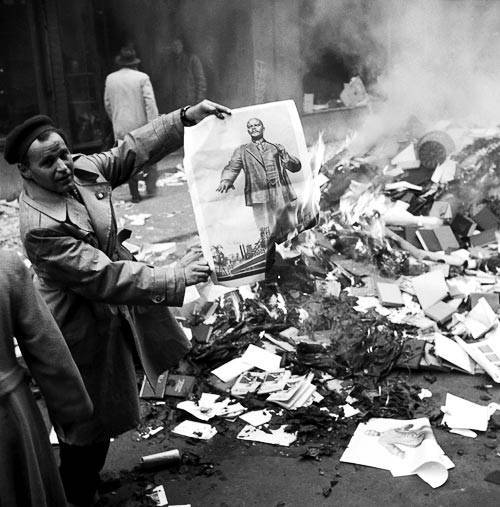
Budapest, 1956. Soviet tanks enter the city, they are surrounded and agitated not to shoot.
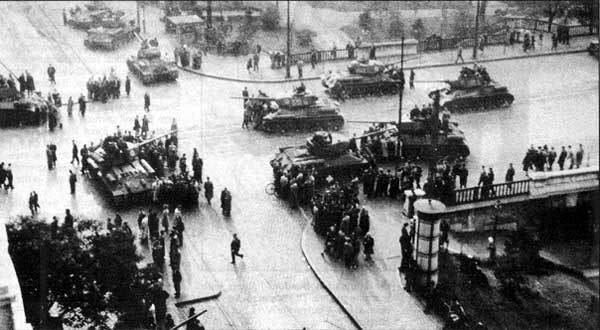
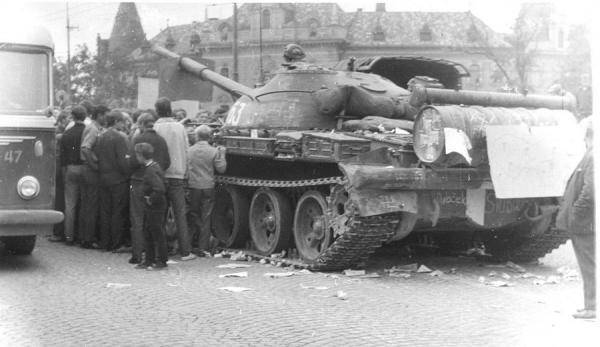
General Pal Maleter - a member of the Second World War, the Minister of Defense of the government of Nagy, is negotiating with the rebels. He took the side of the rebels, participated in the battles, was foully captured during negotiations with the Soviet command and executed in 1958.
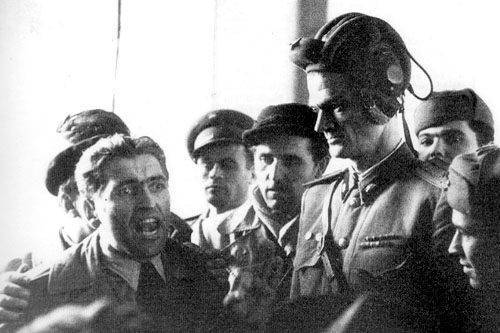
Cardinal Mindzenti, sentenced to life imprisonment 8 in February 1949 of the year, was released by the rebels in October 31 of 1956. A few days later, he took refuge in the territory of the American Embassy. The photo shows Cardinal Mindzenti accompanied by his liberators 2 November 1956 of the year. Budapest, Hungary.
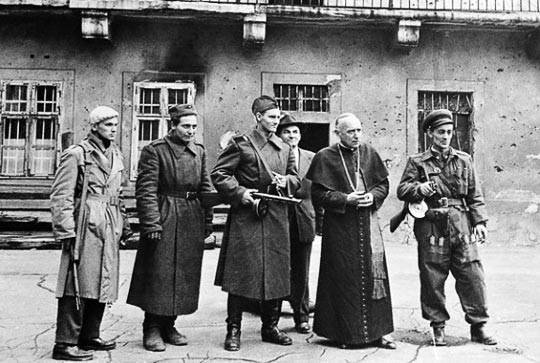
Rebels against tanks.
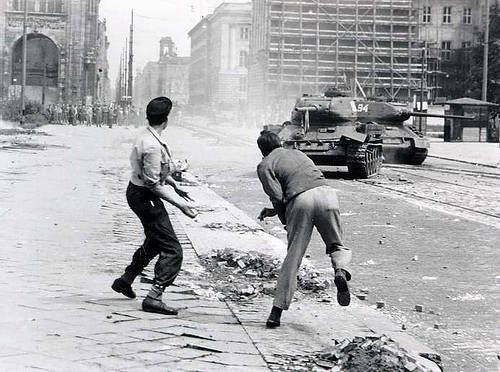
Budapest, 1956. Padded and captured Soviet tanks.
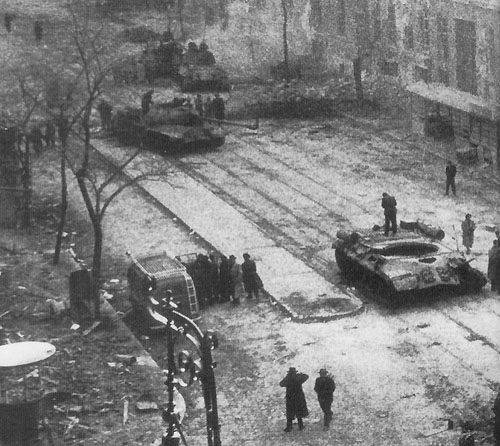
Passers-by view with interest the Soviet anti-tank gun, shot down during the street battles of the Hungarian units with the Soviet troops.
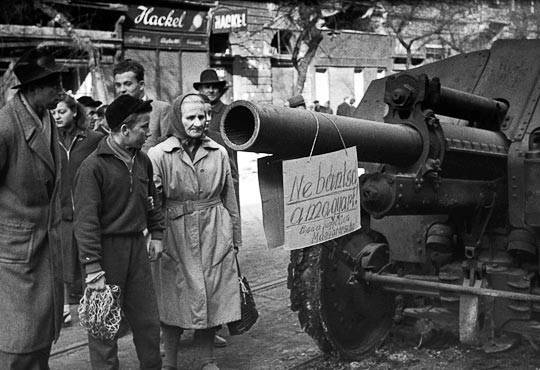
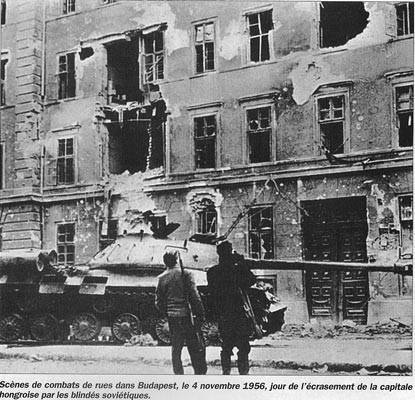
During the fighting in Budapest in November 1956, the Soviet troops used tanks of various modifications, including the heavy tanks EC-3 ("Joseph Stalin - 3"), which appeared at the very end of the Second World War. Budapest, Hungary, November 1956 of the year.
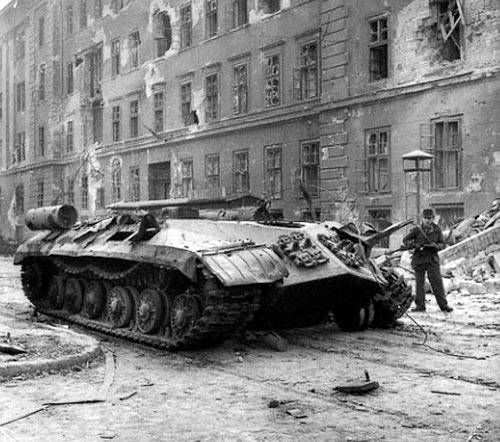
Passers-by are considering killed Soviet soldiers who lie near the wounded Soviet armored personnel carrier. November 14 1956 of the year.
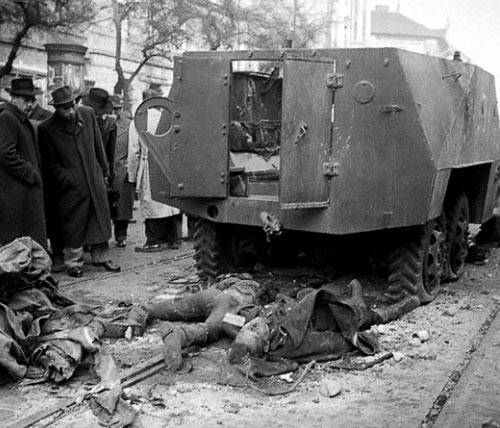
Budapest, 1956.
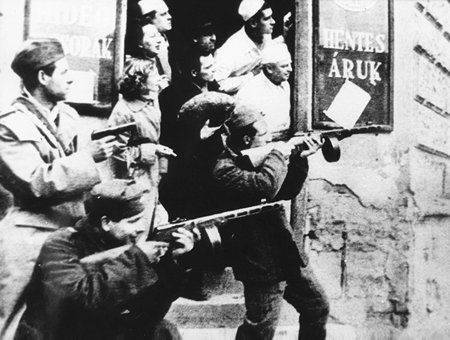
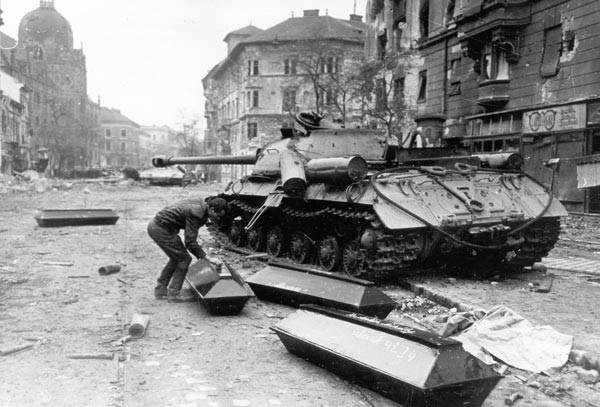
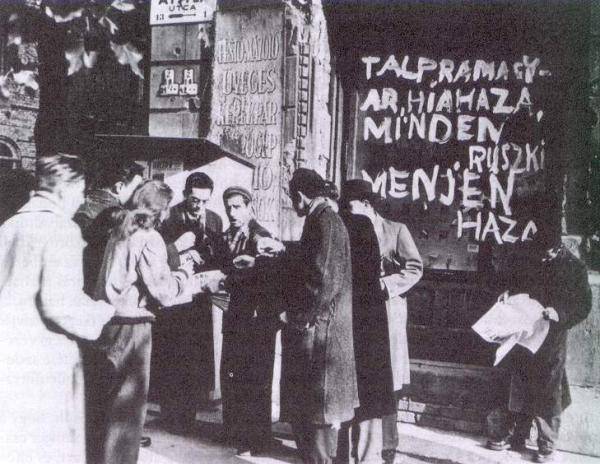
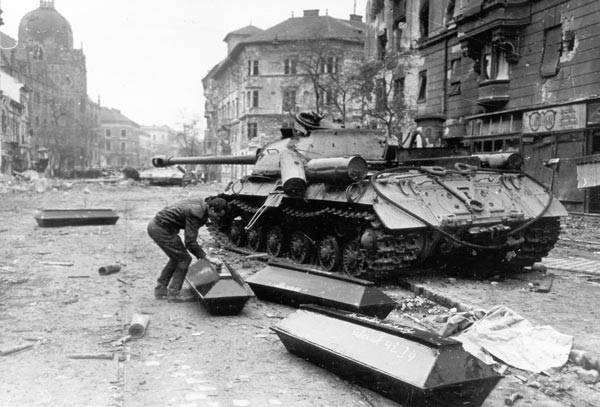
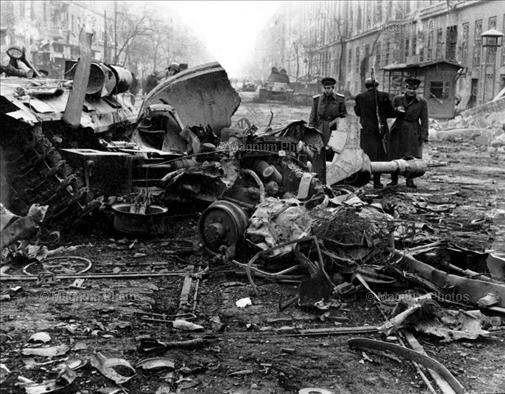
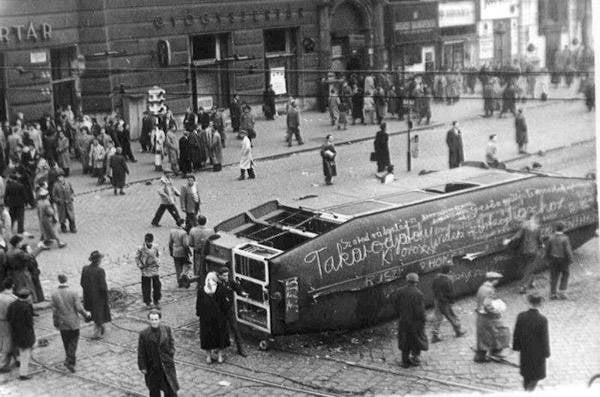
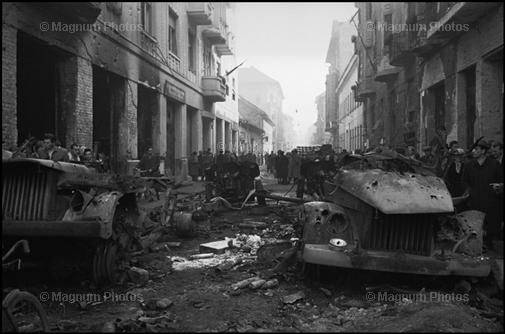
Budapest, 1956. Broken Soviet tank.
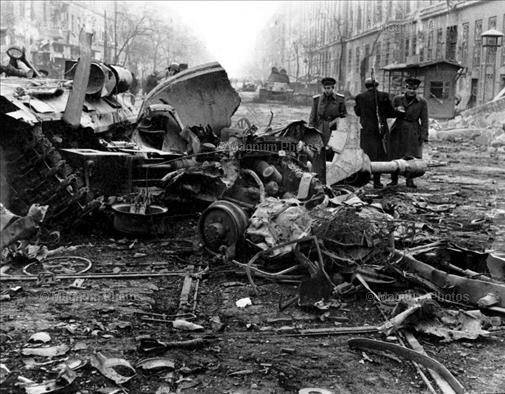
Corpses on the streets of cities.
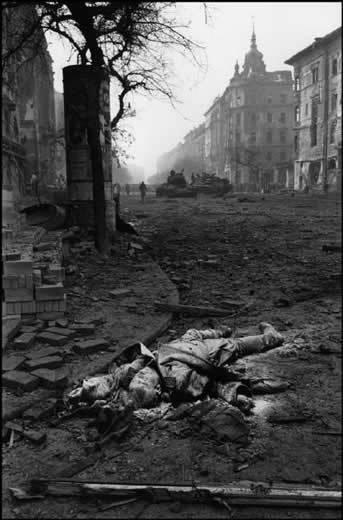
Photo correspondents stand near the corpse of a person who has become a victim of street fighting.
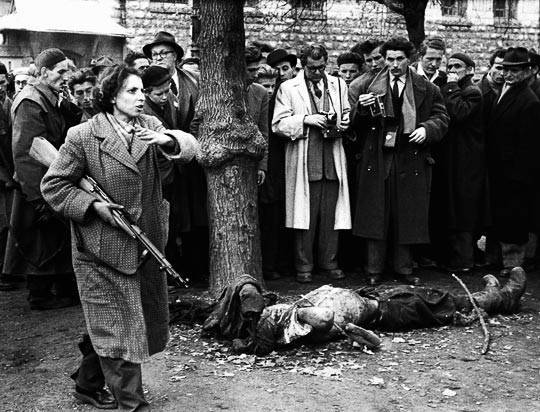
The two Hungarian rebels with weapons calmly walk past the corpses of the Hungarian security officers.
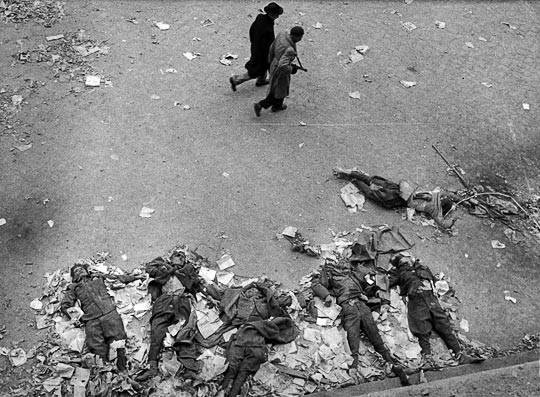
Budapest, 1956. The shooting of an employee of the Hungarian secret police (Allamvedelmi Hatosag).
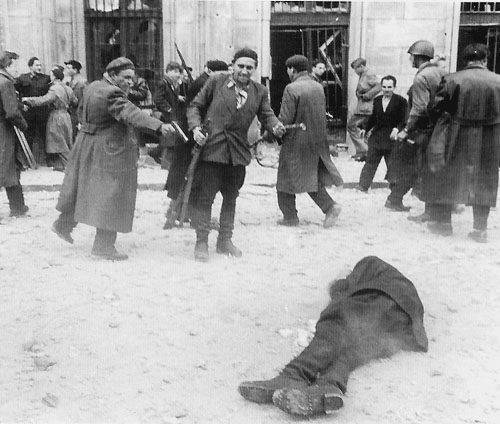
The rebels rejoice in the execution of the officer of the Hungarian state security. At the end of the 40s, the Hungarian state security, following the orders of Matthias Rakosi, carried out terror in the country against political opponents of the type of Stalinist repression in the USSR. In 1956, many victims of those repressions and their family members were the most active participants in the massacre of state security officers.
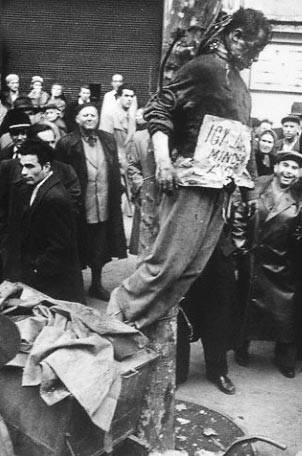
Young rebel.
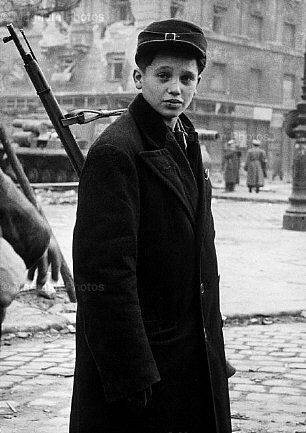
Young Hungarian in the ranks of the rebels.
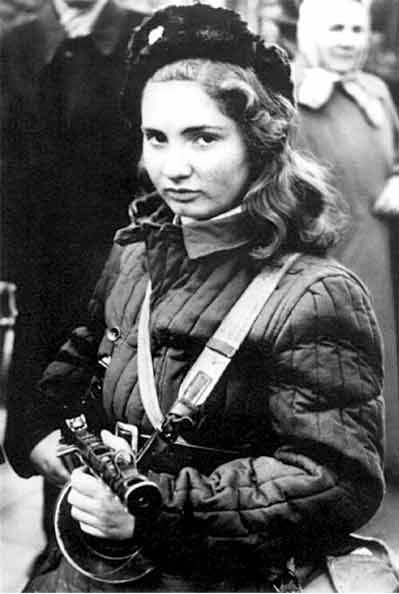
The streets of Budapest after the rise.
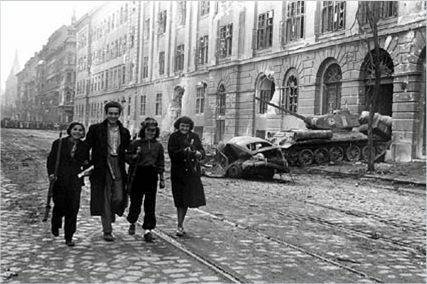
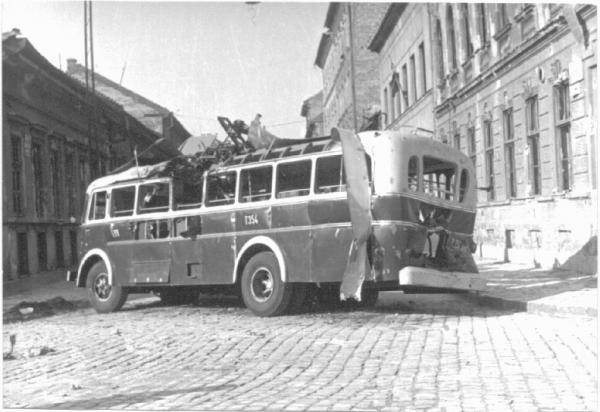
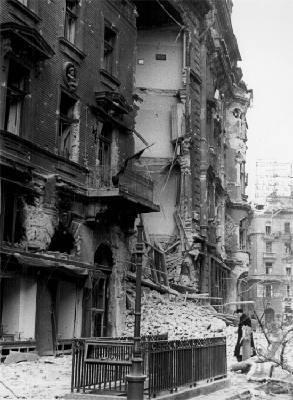
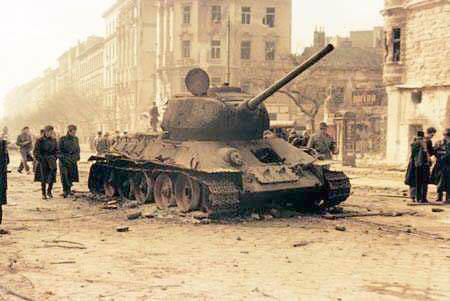
After the street fighting between the rebels of the Hungarians and the Soviet troops, the streets of Budapest were solid ruins.

Information